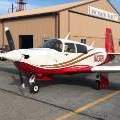Windmilling prop/alternator?
-
Members Online
- EricJ
- Marcopolo
- AndreiC
- Medicpilot
- TangoTango
- GeeBee
- Yetti
- Jpravi8tor
- alextstone
- DCarlton
- Matthew P
- KSMooniac
- raymondscott0321
- NickG
- Ragsf15e
- flyboy0681
- hubcap
- Aerodon
- spaceman39a
- acekng1
- TCC
- Jetdriver
- gwav8or
- markazzarito
- caa0428
- Brandt
- Raptortail
- Wingover
- eman1200
- SScott
- richardbrochu27
- CL605
- rbmaze
- Marc_B
- IvanP
- 65MooneyPilot
- rahill


Recommended Posts
Join the conversation
You can post now and register later. If you have an account, sign in now to post with your account.